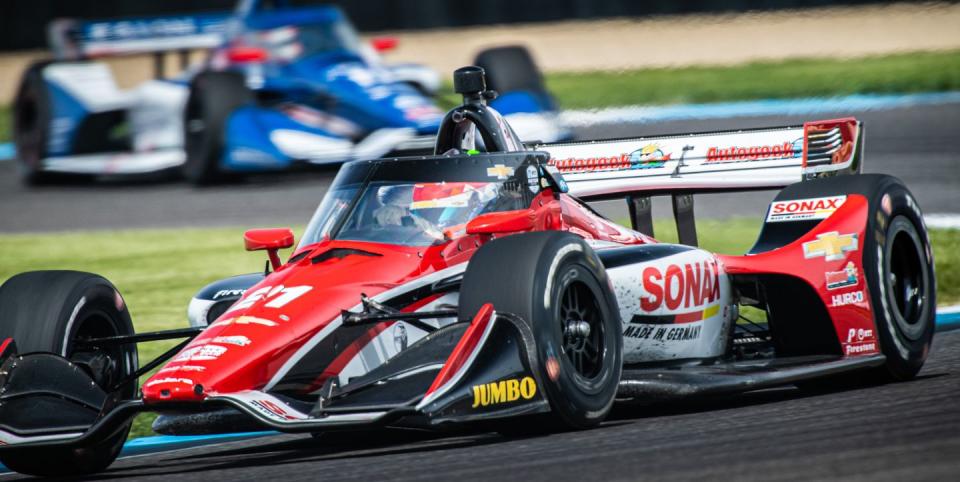Parity and Performance Making IndyCar More Fun Than F1 for Fans and Drivers

Rinus VeeKay led 33 of 85 laps on Saturday to become the NTT IndyCar Series' fifth different winner in five races this season.
Romain Grosjean, who failed to reach the podium in his last five years in Formula 1, finished second.
VeeKay is third first-time IndyCar winner this season, joining Pato O'Ward and Alex Palou.
The 2021 NTT IndyCar Series season is well on its way to going down as one of the more historic, or at least competitive, campaigns in recent memory of American open-wheel racing for several reasons.
First, let’s start with the obvious: Race fans, be they aficionados of IndyCar, Formula 1, NHRA, sprint cars and other four- and two-wheel genres, love to talk about parity, passing on track for the lead, and equal performance. Saturday’s IndyCar winner, Rinus VeeKay, is the fifth different driver to take the checkered flag in as many races this season.
You can’t have better parity than that.

Second, in only his third IndyCar race, former F1 driver Romain Grosjean not only started from the pole—his first in 10 years and first-ever in IndyCar—but led the most laps (44) and finished a strong second behind VeeKay.
Third, with 12 races remaining in the 2021 season, including the 105th Running of the Greatest Spectacle in Racing, the Indianapolis 500 in two weeks, IndyCar is riding a wave of momentum that is not only getting noticed here in the U.S., but also around the world.
As NBC IndyCar lead announcer Leigh Diffey said of the current crop of IndyCar drivers in his race telecast wrap-up Saturday, “They come from all over the world. There is a healthy contingent of Americans and internationals. That’s what makes IndyCar so intriguing.”
Meanwhile, even though it remains the premier series in open-wheel racing around the world, Formula 1 continues to struggle. Over the last three-plus seasons, F1 has not only suffered a continued drop in fan attendance, TV viewership and overall interest, let’s face it, it gets kind of boring and tiring for many race fans around the globe when the same drivers take home all the hardware.

Mercedes’ Lewis Hamilton has won the last four F1 crowns and six of the last seven. Nico Rosberg, who was Hamilton's teammate, was the only driver to snap Hamilton’s run with the 2016 championship. And before that, Sebastian Vettel won four straight crowns from 2010 through 2013.
Do the math: just three drivers have won the F1 championship in the last 11 seasons.
Oh, and let’s not forget, Hamilton has already won three of the first four races thus far in ’21 and is well on his way to an eighth title if things continue in his favor. The trio of Hamilton, Max Verstappen and Valtteri Bottas have stood on the podium together in three of the first four F1 races this season.
Add that last decade domination, as well as the start of 2021, and you get one readily apparent overall analysis: F1 is not exactly a series in which more than two or three drivers have a legitimate chance to win on any given week.
Now look at IndyCar: In that same 11-year stretch from 2010-2020, there have been six— count ‘em SIX—different champions (albeit Scott Dixon has won four titles, along with two each for Dario Franchitti and Josef Newgarden during that same period.


 Yahoo Autos
Yahoo Autos 